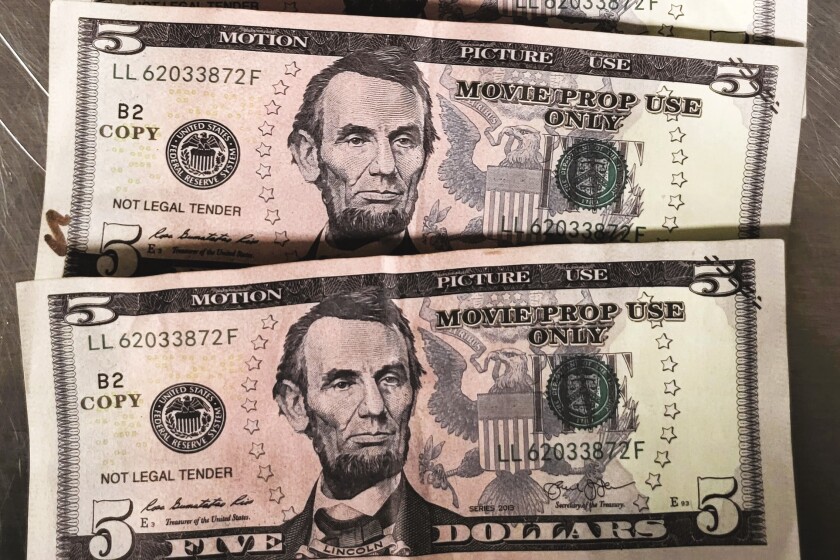Open Rewarding Deals: Purchase Verified copyright Money up for sale Today
Discover making uses of Funny Money in Artistic Creations and Theatrical Performances
Phony money, usually associated with deception and outrage, holds a peculiar allure when it discovers its way right into the world of theatrical efficiencies and artistic creations. As we dig right into the complex uses of fake cash in these imaginative domain names, we start to discover a world where authenticity and imitation blur, motivating us to question the very nature of worth and representation within art and efficiency.

Historical Relevance of copyright Money in Art
The historic value of copyright in art is a complicated and appealing subject that sheds light on the crossway of imagination, subversion, and socio-political commentary. Throughout history, artists have actually made use of phony money as a device for challenging social norms, questioning the worth of currency, and making effective statements regarding riches and power.
One of one of the most significant instances of copyright cash in art days back to the Dada motion of the early 20th century - copyright money for sale. Artists such as Marcel Duchamp and Hannah Höch included phony currency right into their jobs to criticize the capitalist system and explore the principle of worth in a quickly transforming world
Additionally, throughout times of financial instability or political upheaval, funny money has actually been made use of by musicians as a kind of objection or rebellion. By developing and circulating phony currency, musicians have actually had the ability to interfere with the standing quo, difficulty authority, and provoke important conversations concerning the duty of money in society.
Influence of copyright on Visual Arts
By integrating copyright right into their jobs, musicians prompt conversations on the nature of value, credibility, and social understandings of wide range. The usage of phony money in art also raises honest considerations relating to the borders of artistic expression and the ramifications of reproducing lawful tender. In general, the effect of copyright currency on aesthetic arts is diverse, boosting vital reflections on the intersection of money, art, and social worths.
Symbolism and Definition in Theatrical copyright Displays
Making use of staged copyright display screens, artists employ symbolic representations to share deeper meanings and evoke thought-provoking interpretations within the world of performance art. With the consolidation of copyright in staged productions, designers can check out styles such as greed, power, corruption, and the illusion of wealth. Using phony money on phase can act as an allegory for societal problems, financial disparities, and the Read More Here delicacy of monetary systems.
In staged performances, the symbolic value of copyright prolongs past its financial worth. It can symbolize the deceptive nature of appearances, the pursuit of materialistic desires, and the repercussions of dishonest behavior. By using copyright cash as a prop, musicians can challenge target markets to question truth significance of wide range and the ethical borders that people may go across in its quest.
Moral Considerations in Using Fake Cash for Art

One significant moral consideration is the potential lawful repercussions of utilizing phony money in art. Counterfeiting money is prohibited in a lot of nations and can lead to major repercussions for musicians who intentionally include fake expenses into their job. copyright money for sale. This not just puts the musician in jeopardy however likewise elevates inquiries regarding promoting illegal tasks via art
Additionally, there is an ethical predicament concerning the credibility of the artwork itself. Using fake cash obscures the line between truth and imitation, potentially tricking viewers and compromising the stability of the artistic piece. Musicians have to consider whether making use of copyright cash lines up with their values and artistic objectives, weighing the possible influence on their track record and reliability.
Future Trends in Imitation Cash Assimilation
Considering the developing landscape of imaginative expression, the consolidation of copyright cash in imaginative jobs might witness a shift towards intriguing and cutting-edge methods. As musicians continue to press borders and explore new tools, funny money can increasingly be made use of to challenge societal norms, question the worth of currency, or make powerful statements about wealth and consumerism.
One future pattern in copyright money combination could be its usage in immersive art setups where audiences are encouraged to interact with the items, obscuring the lines between fact and illusion. Additionally, advancements in innovation might result in the production of hyper-realistic funny money that is basically tantamount from genuine currency, opening possibilities for much more in-depth and elaborate art work.
In addition, partnerships in between musicians and counterfeiters could lead to unique items that integrate standard artistic techniques with the workmanship of developing funny money. Nonetheless, ethical factors to consider bordering the legitimacy and morality of making use of funny money in art will certainly continue to be a point of contention as these future patterns unravel.
Final Thought
In final thought, the uses of copyright money in artistic creations and theatrical efficiencies have a long history and proceed to be a resource of motivation for musicians. The assimilation of copyright in art is likely to proceed advancing in the future.
Generally, the impact of phony currency on aesthetic arts is diverse, stimulating vital reflections on the intersection of money, art, and societal values.

In verdict, the uses of copyright money in imaginative productions find and staged performances have a long history and proceed to be a source of ideas for musicians. Moral considerations have to be taken right into account when making use of copyright money for imaginative functions. The assimilation of copyright in art is most likely to continue developing in the future.